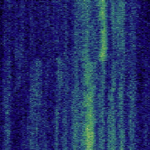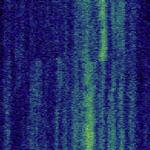Atomic avalanches show up in x rays
Certain crystals switch their structural pattern by tiny but coordinated movements of the constituent atoms. Recent experiments have suggested that these transitions are not wholesale conversions, but a series of sudden, localized shifts inside the crystal. These so-called avalanches have now been observed using x rays by Christopher Sanborn at Boston University, US, and colleagues there and at McGill University, Canada. The results, published in Physical Review Letters, show that atomic behavior in crystals shares similarities with earthquakes.
A martensitic transition is a solid-solid phase transition in which the crystal reconfiguration is usually accompanied by strain. First observed in a type of hard steel called martensite, it was later detected in other materials, such as shape-memory alloys. Observations during martensitic transitions have detected spikes in acoustic emissions and heat flow that imply avalanching, but seeing these structural changes directly required developing a technique that could spatially resolve them from avalanches as they happened.
This was achieved with coherent x-ray beams that are now produced at synchrotron facilities. Using the Advanced Photon Source in Argonne National Laboratory, the authors studied a martensitic transition in cobalt at a temperature of about ° . Coherent x rays scattering off the cobalt interfere with each other to produce a speckle pattern on a CCD camera. Any sudden change in a group of speckles corresponds to an avalanche. The team measured avalanche sizes between nanometers and microns. The rate and distribution of avalanches during strain-relieving structural rearrangements for the phase transition resemble the statistics for aftershocks following an earthquake. – Michael Schirber





